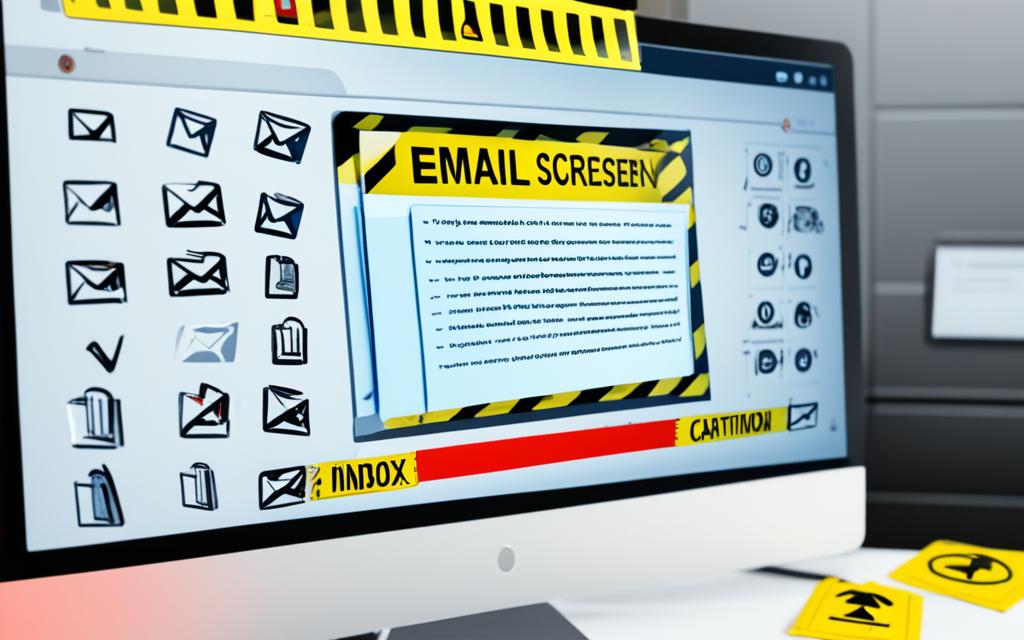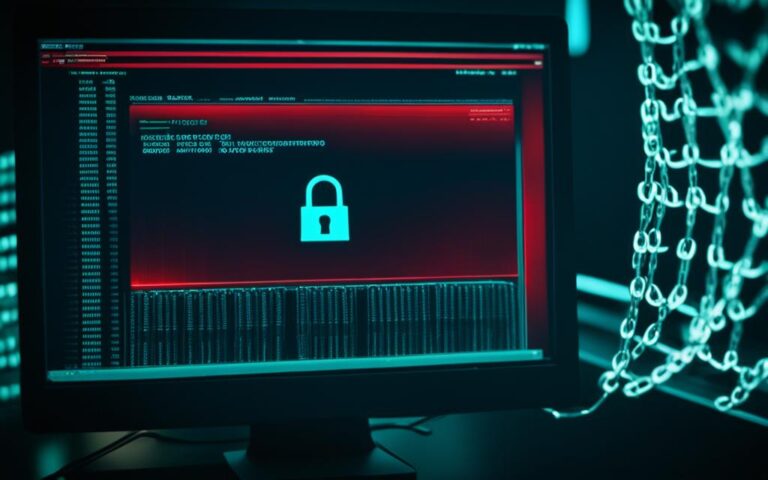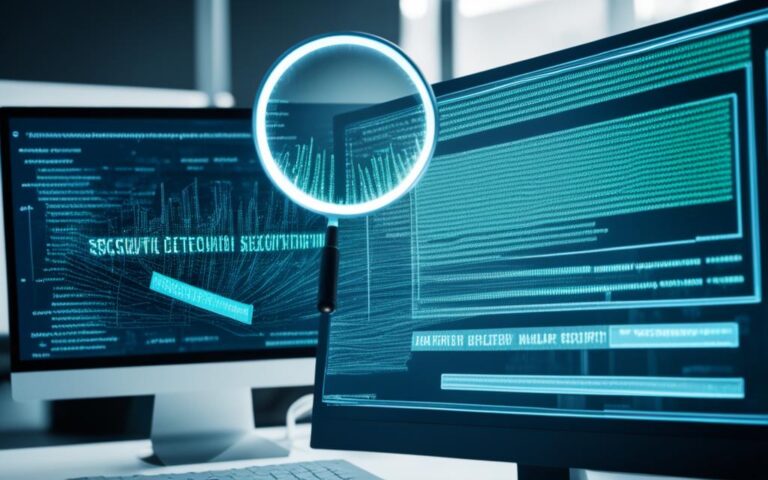Infection Cleanup: How to Handle Email Attachments Safely
Email attachment security, malware protection, and safe email practices are essential elements of maintaining the integrity and security of digital communications. In today’s technological landscape, where cyber threats are increasingly prevalent, it is crucial to understand the risks associated with email attachments and adopt effective strategies to mitigate them.
Malicious attachments can serve as a conduit for malware infections, posing significant risks to personal and professional data. Hence, it is vital to be proactive in handling email attachments safely to minimize the potential impact of cyber threats.
This article aims to provide insights into identifying and dealing with email attachments securely. By following recommended practices and implementing robust malware protection measures, you can safeguard your information and maintain a secure environment for your digital interactions.
Throughout this article, we will address the signs of a malicious attachment, the risks associated with opening infected files, how to identify and determine attachment safety, best practices for email attachment security, and the overall importance of prioritizing email attachment security.
Stay informed, stay protected, and let us guide you through the essential steps to ensure your email attachments are handled safely.
Signs of a Malicious Attachment
When it comes to email attachments, identifying suspicious files is crucial in ensuring your cybersecurity and protecting your digital assets. Spotting malicious email attachments can help you avoid falling victim to harmful malware and potential data breaches. Here are some signs to watch out for:
- Receiving .exe files: Executable files (.exe) can be dangerous as they can potentially contain malicious software that can harm your computer or compromise your sensitive information.
- Unusual or vague subject lines: Pay attention to subject lines that seem out of the ordinary or lack specific details. These can be red flags indicating a potentially harmful attachment.
- Grammar and spelling errors: Poor grammar, spelling mistakes, or awkward phrasing in the email can indicate that it may not be from a reputable source. Malicious actors often make these mistakes, so be cautious.
- Missing salutation: Legitimate emails usually include a proper salutation with your name or a recognized identifier. Emails lacking this personal touch may be suspicious.
- Sense of urgency: Be wary of emails that create a sense of urgency, pressuring you to open the attachment immediately. This tactic is often used to bypass caution and increase the chances of opening malicious files.
By remaining cautious and recognizing these signs, you can protect yourself from the potential threats posed by malicious email attachments.
Risks of Opening a Malicious Email Attachment
Opening an infected email attachment poses significant risks and can have serious consequences. By doing so, you expose yourself to the potential installation of various types of malware, including viruses, ransomware, and spyware on your computer. These malicious attachments can compromise your system’s security, granting unauthorized access to cybercriminals. In turn, this can lead to data breaches, exposing sensitive information and jeopardizing your privacy.
It’s important to understand that the dangers of opening a malicious attachment extend beyond your own device. Infected attachments can also be used to propagate malware across networks, infecting other devices and potentially causing widespread damage. This highlights the need for practicing safe email attachment handling not just for your own protection but also to prevent the spread of malware to others.
Opening a malicious email attachment can result in the installation of viruses, ransomware, or spyware. These attachments can compromise your system and lead to data breaches. The risks extend beyond your device and can impact others connected to the network.
Being aware of these risks is essential to protect yourself and your digital environment. It’s crucial to exercise caution and adopt safer practices when it comes to downloading and opening email attachments. By doing so, you can minimize the potential consequences of malware infections, safeguard your data, and preserve the security of your digital communications.
Consequences of Malware Infections
The consequences of malware infections can be severe and wide-ranging. Here are some potential outcomes:
- Data loss or theft: Malware can compromise sensitive information, leading to financial loss, identity theft, or reputational damage.
- System slowdown and instability: Malware can consume system resources, causing your device to slow down, crash, or become unreliable.
- Unauthorized access: Cybercriminals can exploit malware to gain unauthorized access to your computer, potentially monitoring your activities or stealing login credentials.
- Ransomware attacks: Certain malware strains, such as ransomware, can encrypt your files and demand a ransom for their release, disrupting your business or personal life.
- Propagation of malware: Infected email attachments can facilitate the spread of malware to others connected to the same network, amplifying the potential harm and impact.
Protecting yourself from these consequences requires a proactive approach to email attachment security. Take appropriate measures to mitigate the risks of downloading and opening malicious files, including the use of reliable antivirus software, regular software updates, and adherence to safe email practices.
By understanding the dangers of opening infected email attachments and taking the necessary precautions, you can significantly reduce the risk of malware infections and their associated consequences. Stay vigilant, exercise caution, and prioritize the security of your digital communications to safeguard your data and privacy.
How to Identify and Determine if an Attachment is Safe
Verifying attachment safety is crucial in ensuring the security of your digital communications. When handling email attachments, it is important to assess their authenticity and determine if they pose any potential risks. Here are some key steps to follow:
- Check the source and size of the file: Before opening an attachment, examine the sender’s authenticity and trustworthiness. Be cautious of email addresses with inconsistencies or generic greetings. Additionally, consider the size of the attached file – suspiciously large files may contain hidden malware.
- Pay attention to the file extension: File extensions can reveal a lot about the nature of the attached file. Avoid opening files with risky formats such as .exe or macro-enabled files, as they are commonly used to transmit malware. Stick to trusted and common file formats.
- Scan the attachment with antivirus software: Utilize reputable antivirus software to scan the attachment for any potential threats. This additional layer of protection can help identify viruses or other malicious elements within the attachment.
- Use online tools like VirusTotal: Online scanning tools like VirusTotal can provide an extra level of assurance by analyzing the attachment against multiple antivirus engines. Simply upload the attachment to the platform, and it will check it against numerous antivirus definitions, providing you with valuable insight into its safety.
By following these steps, you can effectively assess email attachments and determine their authenticity and safety. Implementing these measures will help protect your data, mitigate risks, and maintain the security of your digital communications.
Illustrative Example:
“Verifying attachment safety is crucial to avoid falling victim to malware infections. I recently received an email with an attachment from an unknown sender claiming to be a shipping notification. However, upon checking the email address, I noticed several inconsistencies which made me suspicious. To ensure the safety of my system, I followed the steps outlined above, including scanning the attachment with antivirus software. It turned out that the attachment contained a hidden trojan virus, which was promptly removed. This incident served as a reminder of the importance of verifying attachment safety and practicing cautious email attachment handling.”
| File Verification Checklist | Status |
|---|---|
| Check the source and size of the file | Verified |
| Pay attention to the file extension | Verified |
| Scan the attachment with antivirus software | Verified |
| Use online tools like VirusTotal | Verified |
Best Practices for Email Attachment Security
When it comes to email attachment security, following best practices is crucial to protect your data and maintain the integrity of your digital communications. By implementing these measures, you can minimize the risk of malware infections and ensure safe handling of attachments.
Choose Secure File Formats
Selecting secure file formats is essential to prevent the transmission of malware through attachments. Stick to formats such as plain text files, PDFs, or image files, which are less likely to carry harmful payloads. Avoid sending executable files or those with macros, as they are commonly used to distribute malware.
Encryption and Password Protection
For sensitive attachments, consider using encryption and password protection to add an extra layer of security. Encrypting files ensures that only authorized recipients can access their contents, minimizing the risk of unauthorized interception or compromise. When sending encrypted attachments, provide clear instructions on how to decrypt and access the files.
Inform Recipients About Safe File Handling
Educating recipients about safe file handling practices is crucial in maintaining overall email security. Inform them about the type of file being sent, its format, and any necessary passwords or encryption keys required for access. Encourage recipients to scan attachments with reliable antivirus software before opening them to detect and eliminate any potential threats.
“Choosing secure file formats, implementing encryption and password protection, and informing recipients about safe file handling practices are essential steps to enhance email attachment security.”
Conclusion
Email attachment security plays a crucial role in safeguarding your data and protecting your digital communications. By following best practices, remaining vigilant against malware, and implementing necessary security measures, you can minimize the risk of malware infections and ensure the privacy and integrity of your emails.
To enhance email attachment security, it is important to stay informed about the latest threats and updates, regularly updating your software and antivirus programs. Additionally, practicing safe email attachment handling is essential. Be cautious when opening attachments, verify the sender’s authenticity, and avoid opening suspicious or unsolicited email attachments.
Remember, maintaining the security of your digital communications goes beyond protecting your own devices. By staying vigilant and practicing safe email practices, you contribute to the overall cybersecurity ecosystem by preventing the spread of malware and protecting others from potential security threats. Protecting your data and digital communications is not a one-time task, but an ongoing commitment to staying informed and proactive.












